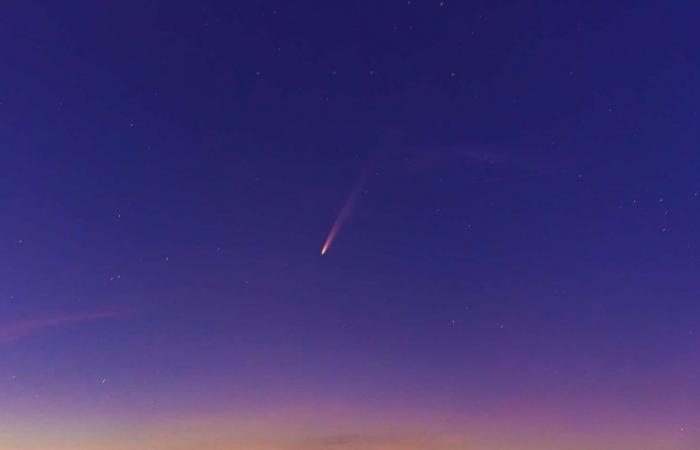Since last weekend, it was possible to observe it in the sky of France. Comet Tsuchinshan-Atlas, codenamed C/2023 A3. Discovered in January 2023, it had just crossed its perihelion, the point in its orbit closest to our Sun. An ordeal which she brilliantly survived. It was visible just before daybreak.
Seti and Unistellar need you to study the fantastic comet Tsuchinshan-Atlas
In some regions of the world, it can even be observed with the naked eye. With a magnitude of around 1.5, it became the brightest comet since Comet Neowise in 2020.
When it disappears from sight, this October 6 for those who are close enough to theequatorequatorit could have reached a nice magnitude of -1.
A comet that goes away only to come back better
But comet Tsuchinshan-Atlas will not have finished making headlines. Because some hope to see it in broad daylight on October 8 and 9. Its magnitude could then in fact be of the order of -4.5. Enough to be able to spot it with binoculars. But be careful not to point them at the very close Sun. The risk to the eyes is major. A safer alternative will be to observe the comet passing through the field of vision of the coronographecoronographe of the solar and heliospheric observatory (SohoSoho, ESAESA, NasaNasa) between October 7 and 10.
Then, comet C/2023 A3 will return to enchant our nights. Around October 10. With a brightnessbrightness that the models promise us to their fullest. It will pass closest to Earth on October 12. Some 70.5 million kilometers away. And it could then be visible to theeyeeye naked with a magnitude of the order of 0.
Comet Tsuchinshan-Atlas, star of our early nights in a few days
During this period, it is towards the west-southwest horizon that we will have to turn. A little after sunset. There tail of the comettail of the comet Tsuchinshan-Atlas will then point first towards Earth. Very quickly, a second queue will appear, in the other direction.
Observations should be favored by earlier sunsets and twilightstwilights shorter at this time of year in the northern hemisphere. On the other hand, beware of Full moonFull moon which could mask the brightness of comet C/2023 A3 around October 17.
Some remarkable dates for the observation of comet Tsuchinshan-Atlas
Note that on October 15, in its journey through the constellationconstellation of the Serpent and that of Ophiucus (the Serpentary), the comet Tsuchinshan-Atlas will pass close – only apparent, of course – to the globular cluster M5. The day before, the Earth will have crossed the orbital plane of the comet. Enough to lighten its tail a little more and reveal a clear and bright line – due to the dust present in the orbital plane that we will see from the edge – above.
Later in October, the comet that has moved away from us and our Sun will be less bright. But higher in the sky. It should therefore remain visible using binoculars or small instruments.






